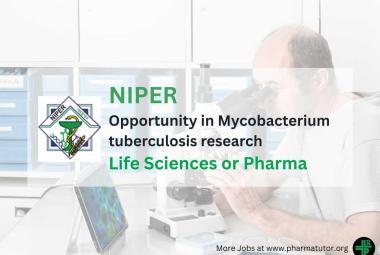ABOUT AUTHORS:
Miss Apoorva Bhatnagar1, Dr. S. C. Mahajan2
1Mahakal institute of pharmaceutical studies,
2Director at Mahakal Institute of Pharmaceutical Studies,
Ujjain (m.p.) 456010
*apy1590bhtngr@gmail.com
ABSTRACT:
Foods and food habits in today’s lifestyle have lead to the disturbances in an ideally nutritionally balanced body. Therefore in such state if “food be your medicine” then it would be great to achieve a healthy body and mind. The article covers major food products and nutraceuticals and their role they play in human health.
REFERENCE ID: PHARMATUTOR-ART-1788
INTRODUCTION:
Nutraceutical, a portmanteau of the words “nutrition” and “pharmaceutical”, is a food or food product that reportedly provides health and medical benefits, including the prevention and treatment of disease. Health Canada defines the term as "a product isolated or purified from foods that is generally sold in medicinal forms not usually associated with food. A nutraceutical is demonstrated to have a physiological benefit or provide protection against chronic disease." Such products may range from isolated nutrients, dietary supplements and specific diets to genetically engineered foods, herbal products, and processed foods such as cereals, soups, and beverages.
Meaning of the term neutraceutical:
The definition of nutraceutical that appears in the latest edition of the Merriam-Webster Dictionary is as follows: A food stuff (as a fortified food or a dietary supplement) that provides health benefits.]1. Nutraceutical foods are not subject to the same testing and regulations as pharmaceutical drugs. Some of the pharmaceutical and biotech companies, which commit major resources to the discovery of nutraceuticals include Monsanto, American Home Products, Dupont, BioCorrex, Abbott Laboratories, Warner-Lambert, Johnson & Johnson, Novartis, Metabolex, Scio-tech, Genzyme Transgenic, PPL Therapeutics, Unigen, and Interneuron. American association of nutritional chemist mentioned nutraceuticals as products that has been isolated or purified from food and generally solved in medicinal forms not usually associated with food1. When food is been cooked or prepared using "scientific intelligence" with or without knowledge of how or why it is being used, the food is called functional food.]3.
[adsense:468x15:2204050025]
History and development:
The term nutraceutical was originally defined by Dr. Stephen L. DeFelice, founder and chairman of the Foundation of Innovation Medicine (FIM), Crawford, New Jersey in 1989 from the two words "nutrition" and "pharmaceuticals". Since the term was coined by Dr. DeFelice, its meaning has been modified by Health Canada which defines nutraceutical as: a product isolated or purified from foods, and generally sold in medicinal forms not usually associated with food and demonstrated to have a physiological benefit or provide protection against chronic disease.Examples are beta-carotene and lycopene.]1
CLASSIFICATION:
Nutraceuticals or functional foods can be classified on the basis of their natural sources, pharmacological conditions or as per chemical constitution of the products. On the basis of natural source it can be classified as the products obtained from plants, animals, minerals or microbial sources.]1The classification of nutraceuticals based upon its therapeutical utility for the treatment or prevention of specific condition may produce a big list. Some of the important conditions in which the nutraceuticals are specially directed for its treatment, prevention or support is given as:
1 Allergy relief- Ginkgo biloba
2 Arthritis support -Glucosamine
3 Cancer prevention -Flax seeds, green tea
4 Cardiac diseases -Garlic
5 Cholesterol lowering -Garlic
6 Digestive support -Digestive enzymes
7 Diabetic support -Garlic, momordica
8 Female hormone support Black conosh, false unicorn
9 Immunomodulators -Ginseng
10 Prostate support -Tomato lycopene
A systematic classification on the basis of therapeutically important compounds of the nutraceuticals products responsible for the specific health benefit can be done as given in:
1 Inorganic mineral supplements Minerals
2 Vitamin supplements Vitamins
3 Digestive enzymes Enzymes
4 Probiotics-Lactobacillus, Acidophilus
5 Prebiotics- Digestive enzymes
6 Dietary fibers- Fibers,Cereals and grains Fibers,Health drinks Fiber
7 Antioxidants -Natural antioxidants
8 Phytochemicals
9 Polysaccharides- Arabinogalactan
10 Isoprenoids- Carotenoids
11 Flavonoids- Bioflavanoids
12 Phenolic- Tea polyphenols
13 Fatty acids- Omega-3-fatty acids
14 Lipids- Spingolipids
15 Proteins- Soya proteins
16 Herbs as a functional foods- Soya proteins
Inorganic Mineral Supplements
Large number of elements control variety of physiological and biochemical functions of human body. Most of these minerals are provided through the diet but their deficiency in diet may develop variety of health related problems and diseases.]4
Calcium-Calcium is an important element in the treatment of decalcification of bone. Calcium deficiency is found in 25% of women, even though much higher percentages have osteopenia or osteoporosis. Prepuberty is the best time to begin supplementing the diet with calcium rich minerals along with exercise regimen. Sufficient intake of calcium and vitamin D post menopausally can significantly reduce the risk for fracture.
Magnesium-Magnesium is an essential element involved in various enzymatic processes and critical in the proper use and maintenance of calcium. Many individuals with calcium deficiency are actually magnesium deficient which prevent proper use of calcium.
Manganese-Manganese is required in several enzymatic reactions and necessary for proper bone and cartilage formation.
Boron-Boron is reported to be helpful in supporting the calcium and estrogen level in post-menopausal in women.
Copper-Copper is an essential element needed by all tissues in the body. Copper and Zinc must be in proper formation. Copper is best absorbed when bound to an amino acids.
Zinc-Zinc is one of the most important trace mineral. Zinc supports the bodies overall antioxidant system by scavenging free radicals. It also performs many other vital functions.
Phosphorous-Phosphorous important in maintaining bone structure and modulating plasma and bone formation.
Silicon-Silicon is concentrated in the active growth areas of bone. It influences both for bone formation and calcification.
Digestive Enzymes-
Much of the reflux is not caused by increased production of acid in the stomach but from poor digestion because of too little acid. As we grow older stomach cells responsible for acid production diminishes, this in turn slows the transit time of food in the stomach causing reflux of food from the esophagus. So we have to use a variety of digestive enzymes to help absorption and digestion of food materials. There are animals as well as plant derived digestive enzymes.The principle digestive enzyme in the pepsin, present in the gastric juices, which helps in the digestion of proteins. It is obtained from the glandular layer of fresh stomach of hog, Sus scrofa var domesticus of family suidae. Pancreatin, an enzyme obtained from pancrease of certain animals like hog (sus scrofa) family suidae or Ox bostaurus of family Bovidae. It is employed as digestive aid for converting starch into dextrin and sugar. Each gram contains not less than 12,000 units of amylase activity, 1000 units of protease activity and 15,000 unit lipase activities. Another important digestive enzyme of animal origin is Trypsin obtained from mammalian pancreas like Ox bostaurus of family Bovidae, Chymotrypsin also obtained from the same source. Urokinase. fibrinolysin, deoxy-ribonuclease, streptokinase are the other animal derived digestive enzymes.Papain, the plant proteolytic enzyme obtained from Carica papaya fruits has anti-inflammatory activity. BROMELAIN derived from stem and fruits of pineapple plant Ananas. Comosus of family Bromeliaceae are used for the treatment of tissue inflammation and edema due to surgery and injury.]5
Dietary fibers-
Dietary fibers play critical role in keeping good health in human individuals and animals. They are rich in antioxidants. Fibers are those part of the plant, leaves, stem, fruits and seeds.]1
There are two types of fibres
1. Water soluble
2. Water insoluble
The water insoluble fibres absorb water to a certain extend and mainly contribute to bulking of stool and allows quick passage of water through the alimentary canal.Soluble fibres get dissolved in water and forms a gel that binds the stool, also slows down the absorption of glucose action and reduce blood cholesterol level.]6
It has been recommended that about 30-40 gm. of dietary fiber should be consumed daily in order to obtain significant health benefits. The main sources of water insoluble fibres include whole grain cereals, whole wheat products, brown rice and fruits and vegetables with the peels. Sources of water soluble fibres are oats, dried beans, legumes lentils, fruits and vegetables. Some of the processed food marketed in the form of the soluble fibres are breads, breakfast cereals, high fiber beverages.Cereals and grains are largely used throughout the worked as the major food material. These can be used in the entire form and sprouted cereals and grains in this milled form. These cereals and grains are rich in normal food nutrients, vitamins minerals and specific phytochemicals. Cereals and grains helps in calcium fortification, maintaining healthy heart and a healthy immune system. Breads of soya flour and linseed provides phyto estrogenic natural substances that mimic the structure of the hormone estrogen.The sprouts are known for this powerful nutritive and healing properties, they are the best "living food" because they contain high proportion of proteins and essential amino acids needed for normal growth of human being. Many sprouted seeds such as those of alfalfa and sunflower contain all the essential amino acid in their 'free state'. Sprouting increases the vitamin content of a seed dramatically. Sprouts reduce inflammation lower fever and tone the body.
Vitamin Supplements:
Vitamins are the complex substances of organic origin which in small quantities are necessary for the maintenance of human and animal life. Vitamin B-Complex Specific vitamin B are recommended for daily requirement to combat high level of homocysteine, a known risk factor for heart diseases. Homocysteine accumulates in the blood secondary to protein intake, especially from meat. Vitamin B extra is generally recommended to those who use caffeine, alcohol, excessive sugar or oral birth pills in their diet, since B vitamins are water soluble and easily excreted from the body.]7Vitamin B1 or thiamin deficiency is mostly observed with individuals using white rice. Riboflavin-5-phosphate is a cofactor for vitamin B2 which is beneficial in people who lack the enzyme to convert vitamin B2 because of nutritional factors or disease condition. Niacin amide deficiency may cause neurological and skin problems. The major sources are the peanut, ragi, pulses, soybean etc. The body can also synthesis niacin from tryptophan pantothenic acid. The pantothenic acid deficiency affect adrenal gland, immune and cardiovascular system. Vitamin B6 is crucial for glucose production, hormone modulation and neuro transmitter synthesis. Pyrodoxal 5-phosphate is considered as an active form of vitamin B6. Vitamin B12 deficiency may be observed in vegetarian people as plant has no appreciable vitamin B12. Folic acid is a B-complex vitamins which contribute to healthy bone formation.Among the other vitamins, vitamin C is the body's main water soluble anti-oxidant. Antioxidants are nutrients that block some of the damage caused by free radicals, which are byproducts that result when our bodies transform food into energy. Vitamin E and beta-carotene are two other well-known antioxidants. Vitamin C is required for the growth and repair of tissues in all parts of our body. It is necessary to form collagen. Vitamin C is essential for the healing of wound and for the repair and maintain cartilage, bones and teeth. Vitamin C deficiency can lead to dry and splitting hair, gingivitis, rough, dry, scaly skin, wound-healing rate, scurvy, easy bruising, nose bleeds, swollen and painful joints, anemia etc.The body does not manufacture vitamin C on its own nor does it store it. It is therefore important to include plenty of vitamin C containing foods in your daily diet. Citrus fruits are rich in vitamin C.] 1, 7
Probiotics:
Probiotics (for life) can be described as a living microorganism which when ingested with or without food improves the intestinal microbial balance and consequently the health and functioning of large intestine. The major sources are the cultured dairy products such as natural cheese, yoghurt, and kefir and butter milk lactobacillus also in green foods such as wheat grain, spirulina and chlorella.]1There are over 400 different bacteria living in the human GI tract, of all these lactobacillus acidophilus is one of the major component of the probiotic fighter. It enhances the immune system. Lactobacillus acidophilus can reduce the incidence of vaginal infections including thrush and bacterial vaginosis. Bifid bacteria and Streptococcus thermophilus both found in yoghurt can prevent young children suffering from diarrhea also in treating travelers’ diarrhea and rotavirus infection. Probiotics only have a transient effect and regular daily intake is needed to bring about health benefits.]1, 7.
Probiotics gaining importance against helicobacter pylori infection, colonic cancer, irritable bowel syndrome, pancreatitis, antibiotic induced diarrhea, Crohn's disease and pouchitis. Probiotics are food components that escape digestion by the normal human digestive enzymes and safety in intact form, reach the colon after passage through the stomach and small intestine where they selectively promote the growth of probiotics.Some factors, both intrinsic and extrinsic, may influence the survival of probiotics in food, and so have to be considered in all stages of probiotic food manufacturing.
· physiological state of the added probiotic in the food
· physicochemical conditions of food processing
· physical conditions of product storage, like temperature
· chemical composition of the product, such as content of nutrients, oxygen or pH
· interactions with other product components, that can be inhibitory or protective
Side effects:
- In some situations, such as where the person consuming probiotics is critically ill, probiotics could be harmful.
- Some hospitals have reported treating lactobacillus septicemia, which is a potentially fatal disease caused by the consumption of probiotics by people with lowered immune systems or who are already very ill.
- Probiotics taken orally can be destroyed by the acidic conditions of the stomach.
- Recent studies indicate that probiotic products such as yogurts could be a cause for obesity trends.
- Fructo-oligo saccharides (FOS) are increasingly used as food supplements. FOS have more long-lasting effect as they encourage the growth of bifid bacteria already present in the gut. At least 10gm FOS is needed daily.]6
Single cell protein-
The mass production of bio protein from the single-cell organism like bacteria or fungi termed as microbial biomass or single cell protein (SCP). Saccharomycescerevisiae were first established for the production of single cell proteins. The biomass were utilized in the forms of soups and sausages. Single cell proteins has more nutritive value than the normal living cells. An ideal biomass consist of the components such as carbohydrates, proteins, vitamins, lipids and trace amount of mineral and salts.
Spirulina-
Spirulina plankton is a blue green vegetable micro algae is a good example of single cell protein. In India, research work is in progress at Central food Technology Research Institute, Mysore on spirulina to develop some single cell proteins as a supplement to food. Spirulina, which is the only natural source providing the highest amount of protein known to man that is, 71%, and it is three times that of soybean and five times that of meat. It contain proteinous nitrogen (11.36%), total organic nitrogen (13.35%), nitrogen from nucleic acid (1.9%), lipid content is (5-6%), having more essential fatty acid (vitamin F) composed of oleic, linoleic, gamma linoleic, palmitic, palmitoleic, heptadecanoic acids. About 40% of the fats include glycolipids including sulpholipids (2-5%) which have significant anti-HIV activity. Spirulina contains the carbohydrate in the form of glycogen and rhamnose. Because of the presence of b-carotene with 9-Cis-carotenoid isomer, it has more antioxidant activity. The mineral content (3-6%) mainly includes iron which has better absorption than natural iron. The better absorption is due to its soluble complexes with phycocyanin which is protein derived from algae having the linear tetra pyrrole viz phycocyanobilin and resembles hemoglobin. Phycocyanin enhances general immunity and useful in lymphocytic activity against cancer.The enzyme content in spirulina is in the form of super oxide dismutae and it is known of its free radical scavenging effects and plays vital role in pathophysiological conditions like atherosclerosis, arthritis, cataract, diabetes and also in emotional stress and aging process. Gamma linolenic acid of spirulina helps to reduce cholesterol levels. It has appetite suppressing activity. Water extract of spirulina inhibits HIV-1 replication in human derived T cell lines and in human peripheral blood mono nuclear cells. Like all other microbial cells, spirulina contains all natural vitamins, B complex, minerals and other growth factors. V. B12 can be utilized only from vegetable source.]8 The World Health Organization has found spirulina has an excellent food for human consumption. Spirulina is FDA approved food supplement and can be marketed in USA as a natural food.]1.
Health drinks-
Drinks are the fast developing area of Nutraceuticals. Some of these health drinks are fortified with the anti-oxidants, vitamin A, C, E. The fruits and vegetable juices have also been shown to produce the health benefits. A Tropicana fruit juice fortified with calcium provides about 365mg calcium per 250 ml glass. An ideal health drink increases physical endurance, improves and increase concentration and reaction speed.]8.
GreenTea
Green tea is made solely from the leaves of Camellia sinensis that have undergone minimal oxidation during processing. Green tea contains salubrious polyphenols, in particular catechins, the most abundant of which is epigallocatechin gallate (EGCG). Green tea also contains carotenoids, tocopherols, ascorbic acid (vitamin C), minerals such as chromium, manganese, selenium or zinc, and certain phytochemical compounds. It is a more potent antioxidant than black tea, although black tea has substances that green tea does not such as theaflavin.
Almond Sharbat (almond soft drink)
Ingredients-Sugar, Almond, Rose water, Cardamom.
Nutrition
Prepared of the choicest almonds and blended cardamom, saffron, and rose water. With a matchless taste, and it is full of values both for brain and body. Regular use enriches body with protein, iron, calcium, phosphorous and other proteins. It can be utilized with either hot water or cold milk. Nutritional value per glass
|
Iron |
0.69mg |
|
Protein |
2.80mg |
|
Carbohydrate |
28.52g |
|
Energy |
206.32cal |
|
Vitamin |
139.631 |
Saffron sharbat
Kesar is used in the preparation of kesar sharbat (saffron soft drink.)
Ingredients
Sugar, Saffron, Cardamom
Nutrition
It is beneficial in the treatment of several digestive disorders, especially flatulent colic. Kesar is useful in treating skin disorders, blood purifying qualities and is also a great anti-oxidant it is a great drink for physical fitness.
Nutritional value per glass
|
Protein |
0.10g |
|
Carbohydrate |
35.52g |
|
Energy |
144.64cal |
|
Fats |
0.24g |
Orange sharbat
Ingredients
Sugar, orange juice
Nutrition
Orange fruit juice is prepared from natural orange juice which is rich source of vitamin A, B, C and calcium also contain sodium, potassium, magnesium, sulphur and chlorine. It is an ideal soft drink for all season. It can be used deviously in various frozen desserts, pudding, custards etc. Vitamin C given energy to tried mind and refreshes it.
Nutritional value per glass
|
Iron |
0.6mg |
|
Protein |
0.0924g |
|
Carbohydrate |
36.16g |
|
Energy |
145cal |
|
Vitamin C |
158.18mg |
Polyunsaturated Fatty Acids (PUFA)
Human body is capable of synthesizing most of the fatty acids it needs except the two major polyunsaturated fatty acids, i.e., omega-3-fatty acid and omega-6-fatty acids. These fatty acids are required to be supplemented from the diet. The polyunsaturated fatty acids are the known precursors for arachidonic acid (AA), eicosapentaenoic acid (EPA) and docosahexanoic acid (DHA). These fatty acids have been fund to regulate blood pressure, heart rate, blood clotting and immune response. Omega-3-fatty acids have been reported to be important fatty acids in the prevention of heart diseases and also in the treatment of arthritis. Omega-3 fatty acids are mostly found in cold water fishes such as tuna, salmon and macaerel. It is also present in dark green leafy vegetables, flaxseed oil and in certain vegetable oils. The fatty acids such as AA and DHA are essential for the development of the foetus and also during the first six months after birth. The deficiency of these fatty acids may result in poor development of foetus and may also cause a verity of problems such as premature birth to underweight babies. Breast milk is a very rich source of DHA. Most of the infant formulas which are used as a substitute of breast milk should be supplemented with DHA, as per the recommendation by World Health Organization.
Herbs as Functional Food
A great attention has nowadays been given to discover the link between dietary nutrients and disease prevention. Large numbers of herbs which had been in use since unknown time have been shown to play a crucial role in the prevention of disease. In addition to the macro and micro nutrients such as proteins, fats, carbohydrates, vitamins or minerals necessary for normal metabolism, a plant based diet contains numerous nonnutritive phytoconstituents which may also play an important role in health enhancement. A brief overview of the role of various herbs in disease prevention, with a focus on bioactive components from flaxseeds, garlic, citrus, fruits, soybean, and ginkgo biloba has been given in this part of the nutraceuticals.
Flaxseeds
Flaxseeds are the dried ripe seeds of Linum usitatissimum, family Linaneae. The components are of great interest as functional food. Flaxseed incorporations into the diet is particularly attractive from the perspective of specific health benefit. Flaxseed has been recorded as one of the six plant materials as cancer preventive foods. Alpha linolenic acid (ALA) has a broad spectrum of health advantages. It inhibits the production of eicosanoids, alters the production of several prostanoids, reduces blood pressure in hypertensive patients and lowers triglycerides and cholesterol. Dietary ALA may retard tumor growth and plays an important role in metastasis. It has been suggested that Ala is dietary essential for optimal neurological development of humans especially during fetal and early postnatal life. Dietary fibers of flaxseeds contain about 6% mucilage which has nutritional value. It appears to play a role in reducing diabetes and coronary heart disease risk, preventing colon and rectal cancer and reduces the incidence of obesity.
Ginkgo biloba
Ginkgo biloba, family Ginkgoaceae, known as fossil tree is an important drug used in traditional Chinese medicine since more than 2800 years. Mainly leaves and edible seeds are used as drugs. Ginkgolides A, B, C and bilobalide are also the therapeutically active constituents. Leaf contains 6-hydroxykynurenic acid, a metabolite of tryptophan.The leaves are recommended as being beneficial to the beneficial to the heart and lungs. Ginkgolides present in the leaves are able to alleviate the adverse effects of platelet-activating factor in a number of tissues and organs both in animals and in humans. It is also effective in the treatment of arterial insufficiency in the limbs and in the brain. Garlic organosulfur compounds:Garlic consists of the fresh or dried bulbs of Allium sativum, family Liliaceae. It is a perennial erect bulbous herb indigenous to Asia but commercially cultivated in most countries. Garlic is used as an adjuent to dietic management in the treatment of hyperlipidemia and in the prevention of atherosclerotic (age dependent) vascular changes. Fresh garlic juice, aged garlic extract or the volatile oil, all lowers cholesterol and plasma lipids, lipid metabolism, and atherogenesis both in vitro and in vivo. The mechanism of garlics antihypercholesterolaemic and antihyperlipidaemic activity appears to involve the inhibition of hepatic HMG-CoA reductase and remodeling of the plasma lipoprotein and cell membrane. The overall activity of garlic is mainly due to the presence of sulfur compound such as allin, allicin, ajoene and others.Garlic has been reported to reduce the risk of colon cancer and lung carcinoma. Consumption of one or more servings of fresh or powdered garlic per week resulted in a 50% lower risk of cancer of the distal colon and a 35% lower risk of cancers anywhere in the colon.
Citrus limonoids
Citrus fruit consumption has been shown to protect against a variety of human cancers. The citrus fruits such as oranges, lemons, limes and grapefruits are the principal source of important nutrients like vitamins C, folate, fibres and vitamins E, but the other monoterpene compounds known as limonoids are reported to be responsible for the anticancer activity. d-limonene, a predominant monocyclic monoterpene found in essential oil of citrus fruits has been reported to be a cancer chemo preventive agent. The mechanism of antitumor activity of limonoids includes the induction of hepatic detoxification enzyme, glutathione S-transferase and uridine diphosphoglucoronosyl transferase. Limonene has little or no toxicity in humans and has been suggested as a good candidate for human clinical chemoprevention.
Soya products
Soybean, Glycine max, family Leguminoseae has clearly been a plant food in the spotlight in the 1990s. it has been recognized as an excellent source of protein, equivalent to quality to animal protein. Soya has been extensively investigated for its ability to treat and prevent a variety of chronic diseases including cancer. Soybean meals, concentrates and isolates are used as meat substitute and have many healthful benefits. Soybean is also a major source of lecithin whichyields liposomes used to formulate stable emulsions and finds major use in food technology. The primary isoflavones in soya, genistein and daidzein are structurally similar to the estrogenic steroids and have been reported to have estrogenic and antiestrogenic activities. Due to their weaker activity, isoflavones may act as antiestrogens by competing with the more potent naturally occurring estrogens for binding to the estrogen receptor. Due to this, soya consumption may reduce the risk for estrogen-dependent cancers. South East Asian population who consume 20-80 mg of genistein per day are found to have significantly lower incidence of breast and prostate cancer. Genistein has been reported to be a potent and specific inhibitor of protein tyrosine kinase. Genistein also inhibits DNA topoisomerase II activity, alters cell cycle specific events, induce apoptosis and inhibits angiogenetic process which is essential for tumour growth.
Tomato lycopene.
Lycopene is a carotenoid principle present in lycopersicon family Solanaceae known throughout the world as tomato. Clinical studies have indicated that lycopene significantly lowered the risk of prostate cancer. The candidates that consumed processed tomato products about 10times per week had less than one half the risk of developing prostate cancer. Lycopene activity is likely to be related to its antioxidant function because lycopene has been reported to be the most efficient quencher of singlet oxygen in biological system. Lycopene has also been shown to reduce risk of other types of cancers of digestive tract, pancreas, cervix, bladder and skin. Recently it has been proved that low plasma lycopene levels may be an independent risk factor for lung cancers especially in smokers.
MILK BIOLOGICALLY ACTIVE COMPONENTS AS NUTRACEUTICALS
Milk contains components that provide critical nutritive elements, immunological protection and biologically active substances to neonates. Milk proteins are currently the main source of a range of biologically active peptides concentrates and these peptides are potential health enhancing nutraceuticals for food and pharmaceutical applications.Several bioactive peptides may be used as nutraceuticals, for example, in the treatment of diarrhea, hypertension, thrombosis, dental diseases as well as mineral malabsorption and immuno deficiency. Minor whey proteins such as lactoferrin lacto peroxidase, lysozyme and immuno globulins are considered as antimicrobial proteins. Milk also contains some natural bio active substances. These include oligosaccharides, fucosylated oligosaccharides, hormones, growth factors, mucin, gangliosides and endogenous peptides which are present in milk at secretion.]1, 8
Bioactive Proteins/Peptides as Natural Ingredients of Milk
•Thyrotropin - releasing hormone (TRH)
• Luteinizing hormone - releasing hormone (LHRH)
•Somatostatin (SIH)
•Gastrin - releasing peptide (GRP)
•Calcitonin
•Adrenocorticotropic hormone (ACTH)
•Insulin
•Growth factors
•Relaxin
•Prolactin
•Thyroid stimulating hormone (TSH)
•Lysozyme
• Lacto peroxidase
•Lacto ferrin
•Transferrin
• Immunoglobulins (IgA, IgM, IgG)
•Enzymes (e.g. Plasmin)
MELATONIN CONTENT IN GRAPE
The discovery of melatonin in plants has opened up a new field of knowledge in the food and nutritional sciences. It has been found in edible plants, medicinal herbs and seeds. Its role in plants varies from regulation of seasonal and circadian rhythms to antioxidant defence against environmental stresses. Particularly in germ tissues of seeds and flowers and also in growth and development regulation, the same as the plant hormone auxin (iodole - 3 - acetic acid) and indolic compounds. Moreover, auxins and their derivatives such as indole-3-methanol (or indol carbinol), in addition to this role as plant hormones, exert antioxidant, ant carcinogenic and antimutagenic properties, thus enhancing the chemo preventive potential of plant-derived food stuffs. From the nutraceutical point of view, it has significant synergistic antioxidant effect with polyphenols. Melatonin which is also present in grape extract of some Vitisvinifera cultivars, particularly Nebbiolo, croatina, Cabernet, Sauvignon, Sangiovese and Merlot. Its concentration determined with a modified high-performance liquid chromatographic (HPLC) method.
Melatonin extraction for HPLC analysis
Kolar et. al method proved to be the most reliable in detecting melatonin. It was further improved with the following modifications.Frozen grape skin (5g) was crushed in a mortar with liquid nitrogen, placed in 50ml poly propylene tubes with 10ml of extraction buffer [1mol L–1Tris-Hydrochloric Acid buffer, PH 8.4, 0.4 mol L–1per chloric acid plus 0.1% EDTA, 0.05% sodium thiosulphate and 10mol L–1ascorbic acid]. Extraction was achieved by incubation on an orbital shaker for 1 hour room temperature after 15min of sonication. After centrifugation (10000´g, 10min, 40C) and filtration through nylon cloth, a system of two C18 Sep-Pak cartridges connected in series was utilized to purify and concentrate melatonin, which was finally eluted with methanol. Samples were stored in a freezer at –200C until use.All the above extraction steps were performed in disposable vessels, which were rinsed in concentrated nitric acid and autoclaved at 1200C for 15 min before use, to avoid contamination.]1, 8
Determination of melatonin by HPLC with fluorimetric detection
Fluorescence detection (FD) was suitable for melatonin detection in grape skin extracts owing to the characteristic fluorescence of indolic compounds at specific excitation and emission wavelength. HPLC analysis was performed on an LC-10A Dvp, SIL-10A Dvp HPLC system with a SPD-10AVP and Rf- 10 A´1 detectors.The HPLC pumps, auto sampler and detectors were controlled by class VP 3.4 software. A Phenomenex Luna RP C18 column (250 ´ 4.6mm i.d, particle size 5mm) provided with a guard column obtained from Chemtek Anlytica, was employed for all the analyses at room temperature (240C). The mobile phase consisted of a mixture of sodium acetate (10m mol L–1), adjusted to PH 4.5 with concentrated acetic acid, Na2 EDTA (0.01mmol L–1) and 200 mL L–1acetonitrile, delivered iso cratically at a flow-rate of 1mL min–1. 9
Results
HPLC analysis of grape skin extracts obtained with the modified Kolar et al method and using a calibration curve with six different standard melatonin concentrations (10, 50, 100, 200, 500 and 1000 pgmL–1) allowed the identification of a characteristic peak, very likely corresponding to melatonin. Its identification was obtained by an orverlay of standard and sample chromatograms (Fig. 2(a)) and also of samples with or without standard enrichment .Chemiluminescence detection confirmed the presence of melatonin in grape skin samples two characteristic absorption bands, at 225 and 281 nm, were observed in presence of 1mol L–1sulfuric acid (curve 'a' in Fig.3) further more, the addition of potassium permanganate and formaldehyde oxidative milieu considerably modified the absorption band at 281nm, as expected.
MARKET INTEREST OF NUTRACEUTICALS
The nutraceuticals industry is still in its formative period, and at present there is no universal agreement or legal definitions of the terms and designations used by this industry sector. According to the widely accepted definition, "A nutraceutical is any substance that is a food or a part of a food and provides medical or health benefits including the prevention and treatment of disease." Products include isolated nutrients, dietary supplements and processed foods such as cereals, soups, soyfood, and beverages. The nutraceuticals market comprises two principal segments: Functional Foods and Dietary Supplements. Functional foods are similar in appearance to a conventional food or beverage, are consumed as part of a normal diet, and have been demonstrated to have physiological benefits or to reduce the risk of chronic disease beyond basic nutritional functions. Functional foods can also promote growth and development and enhance performance, and can take many forms. Some may be conventional foods with bioactive components that can now be identified and linked to positive health outcomes (e.g., soy protein, oat fiber, cranberries, tomatoes and carrot juice). Some may be fortified to enhance foods or specifically created to reduce disease risk (e.g., vitamin- and mineral-fortified cereal, folate-fortified flour and grain products, calcium-enriched orange juice or milk, phytosterol-fortified spreads).12Dietary supplements are foodstuffs that are intended to supplement the normal diet and that are concentrated sources of nutrients or other substances with a nutritional or physiological effect, alone or in combination, marketed in pharmaceutical dose form and administered orally. Dose forms include capsules, pastilles, tablets, pills and other similar forms, sachets of powder, ampoules of liquids, drop dispensing bottles, and other similar forms of liquids and powders designed to be taken in measured small unit quantities. Dietary supplements contain all products that can be purchased by the consumer without a prescription. The nutraceutical market is becoming more competitive with the entry of pharmaceutical and major food companies into the nutraceutical arena. Also, many food companies have established their nutraceutical divisions with a view toward a diversified product line. Pharmaceutical companies have also joined the race by acquiring dietary supplement producers. Recent years have marked the entry of major food and pharmaceutical companies into the nutraceutical marketplace, including Kellogg, Heinz, M&M, Quaker Oats, Unilever, Cargill, Hormel, GlaxoSmithKline, Warner-Lambert, Johnson & Johnson and Wyeth.]1, 13The 2004 global nutraceuticals market at the retail level is estimated at approximately $106 billion and is poised to grow at a compounded annual growth rate of 6.0% during 2004–2009 to exceed $140 billion in 2009. Functional foods represent the largest and fastest growing segment worldwide, with sales estimated at $77 billion for 2004 and projected to reach $103 billion by 2009. The functional food segment is expected to retain its leading position to 2009.]1, 17
NUTRACEUTICALS AVAILABLE IN MARKET
|
Brand name |
Components |
Function |
|
z- trim |
Wheat |
Zero calorie fat replacer |
|
Linumlife |
Lignan extract flax |
prostate health |
|
Fenulife |
Fenugreek galactomannon |
Control blood sugar |
|
Teamax |
Green tea extract |
Potent antioxidant |
|
Marinol |
omega 3 FA, DHA, EPA |
Heart health protection |
|
Clarinol |
CLA |
Weight loss ingredient |
|
Cholestaid |
Saponin |
Reduce cholesterol |
CONCLUSION
Nutraceuticals are food supplements and have nutritional value. The present junk foods will not provide any nutritional value, rather it adversely effect the body. It is certainly makes the old saying "you are what you eat". More relevant in context of the health benefits of the food. As the importance of dietry changes to optimize health in gaining recognition and acceptance, the food industry is responding to consumer demands for a more healthful nutrient rich food products.. Hence it is concluded that nutraceuticals can be recommended as a regular part of the diet.]17.
REFERENCES
1. aapsj.org/view.asp?art=ps050325
2. en.wikipedia.org/wiki/Nutraceutical
3. efsa.europa.eu/
4.Report of a Joint FAO/WHO Expert Consultation on Evaluation of Health and Nutritional Properties of Probiotics in Food Including Powder Milk with Live Lactic Acid Bacteria (October 2001). “Health and Nutritional Properties of Probiotics in Food including Powder Milk with Live Lactic Acid Bacteria". Food and Agriculture Organization of the United Nations, World Health Organization Retrieved 2009-11-04.
5. blog.womenshealth.northwestern.edu/2010/08/fit-more-fiber-into-your-diet/
6. medindia.net/DietAndNutrition/dietarticle.asp
7.Pharmacognosy and Phytochemistry - Part II, 1stedition by Vinod. D. Rangari.
8.Pharmacognosy by C.K Kokate.
9.Nutraceutical - Definition and Introduction AAPS Pharmsci 2003; 5 (3) Article 25.Critical Reviews in Food Science and Nutrition, 45: 645-656 (2005).Food and Nutrition, Vol. I & II by S. Swaminathan.
10.Schlimme and Meisel (1995). Bioactive peptides derived from milk proteins structural physiological and analytical aspects DieNahrong 39: 1-20
11. healthandyoga.com
12. en.wikipedia.org/wiki/Nutraceutical
13.Plant Drug Evaluation by Madhu.C.Divakar
14.Debbabi, H., Dubarry, M., Rautureau, M., and Tome, D. 1998. Bovine lactoferrin induces both mucosal and systemic immune response in mice. Hournal of Dairy Research, 65: 283-293.
15.Zeisel SH. Regulation of "Nutraceuticals". Science 199; 285: 185-186.
NOW YOU CAN ALSO PUBLISH YOUR ARTICLE ONLINE.
SUBMIT YOUR ARTICLE/PROJECT AT articles@pharmatutor.org
Subscribe to Pharmatutor Alerts by Email
FIND OUT MORE ARTICLES AT OUR DATABASE









